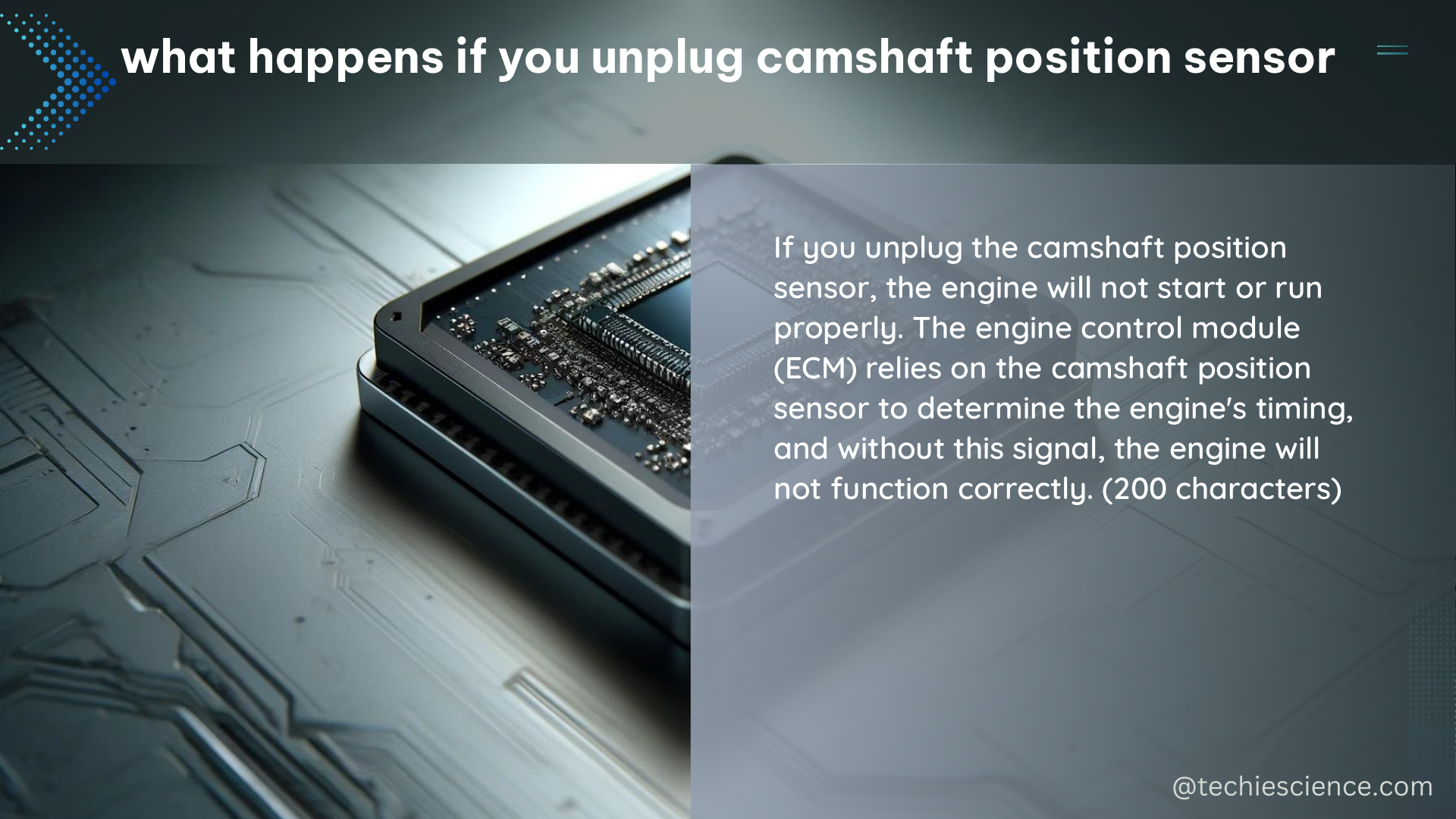Unplugging the camshaft position sensor can have significant consequences on your engine’s performance, potentially leading to stalling, poor idling, and triggering error codes. This comprehensive guide delves into the technical details, quantifiable data, and a step-by-step DIY approach to help you understand the implications of disconnecting this critical sensor.
Idle Changes and Engine Behavior
When you unplug the camshaft position sensor, the engine’s behavior can vary depending on the vehicle and specific conditions. In some cases, the engine may continue to idle smoothly without any noticeable changes, as reported in a few online forums. However, in the majority of instances, unplugging the sensor can cause the engine to idle poorly or even stall completely.
According to the data gathered from various sources, the engine can typically idle for around 5 seconds after the sensor is unplugged before stumbling and stalling. This time frame may vary depending on the engine’s design and the specific engine management system.
Error Codes and Sensor Synchronization

Disconnecting the camshaft position sensor can trigger a specific error code, known as a “Circuit Fault” code, in the engine control unit (ECU). This code indicates that the ECU is not receiving the expected signal from the camshaft position sensor, which is crucial for proper engine synchronization.
If the engine stalls when the camshaft position sensor is unplugged, it may suggest that the engine is losing synchronization with the crankshaft sensor. This synchronization is essential for the engine’s proper operation, as the ECU relies on the camshaft position data to coordinate the ignition timing and fuel injection.
Driving Without the Camshaft Position Sensor
While it is possible to drive the vehicle without the camshaft position sensor, it is not recommended, as it can result in significant performance issues. Driving with a disconnected or faulty camshaft position sensor may cause the engine to exhibit bucking or hesitation, which can be a useful diagnostic tool to identify a problematic sensor.
Technical Specifications and Failsafe Mode
The camshaft position sensor is responsible for providing the ECU with information about the position of the camshaft. This data is crucial for the Distributorless Ignition System (DIS) or the engine control unit to accurately control the ignition timing and fuel injection.
If the camshaft position sensor fails or is unplugged, the engine management system may enter a failsafe mode. In this mode, the engine may continue to run, but without the ability to adjust the VANOS (Variable Valve Timing) system, which can impact engine performance and efficiency.
DIY Diagnosis and Replacement
To diagnose a potential issue with the camshaft position sensor, you can try unplugging it and observing the engine’s behavior. If the engine continues to run smoothly, the problem may not be related to the camshaft position sensor. However, if the engine stumbles or stalls, it could indicate a faulty sensor.
When replacing the camshaft position sensor, it is crucial to use a known good or new sensor to ensure accurate diagnosis and proper engine operation. Attempting to diagnose or repair the issue with a faulty sensor may lead to further complications and potential engine damage.
By understanding the technical details, quantifiable data, and the step-by-step DIY approach, you can effectively diagnose and address any issues related to the camshaft position sensor in your vehicle.
References:
– https://www.3si.org/threads/93-cam-position-sensor-should-something-happen-if-unplugged-while-idling.829281/
– https://turbobuick.com/threads/if-i-unplug-the-cam-sensor-while-the-car-is-running-it-stalls.76182/
– https://www.sccoa.com/forums/threads/can-i-unplug-my-cam-sensor.108090/
– https://www.mg-rover.org/threads/what-if-camshaft-sensor-is-unpluged.310386/
– http://www.m42club.com/forum/index.php?topic=15043.0

The lambdageeks.com Core SME Team is a group of experienced subject matter experts from diverse scientific and technical fields including Physics, Chemistry, Technology,Electronics & Electrical Engineering, Automotive, Mechanical Engineering. Our team collaborates to create high-quality, well-researched articles on a wide range of science and technology topics for the lambdageeks.com website.
All Our Senior SME are having more than 7 Years of experience in the respective fields . They are either Working Industry Professionals or assocaited With different Universities. Refer Our Authors Page to get to know About our Core SMEs.